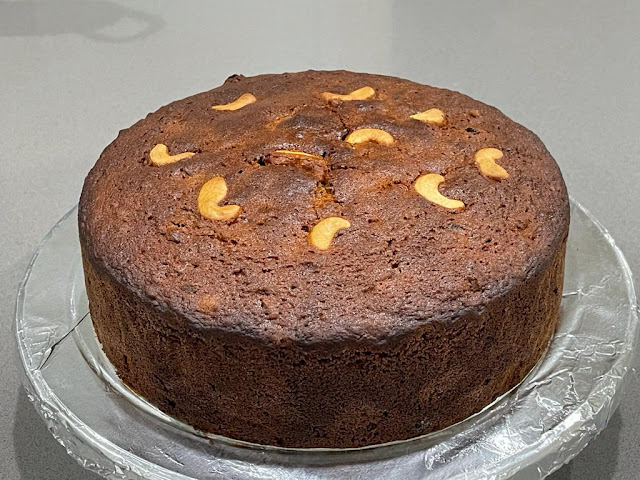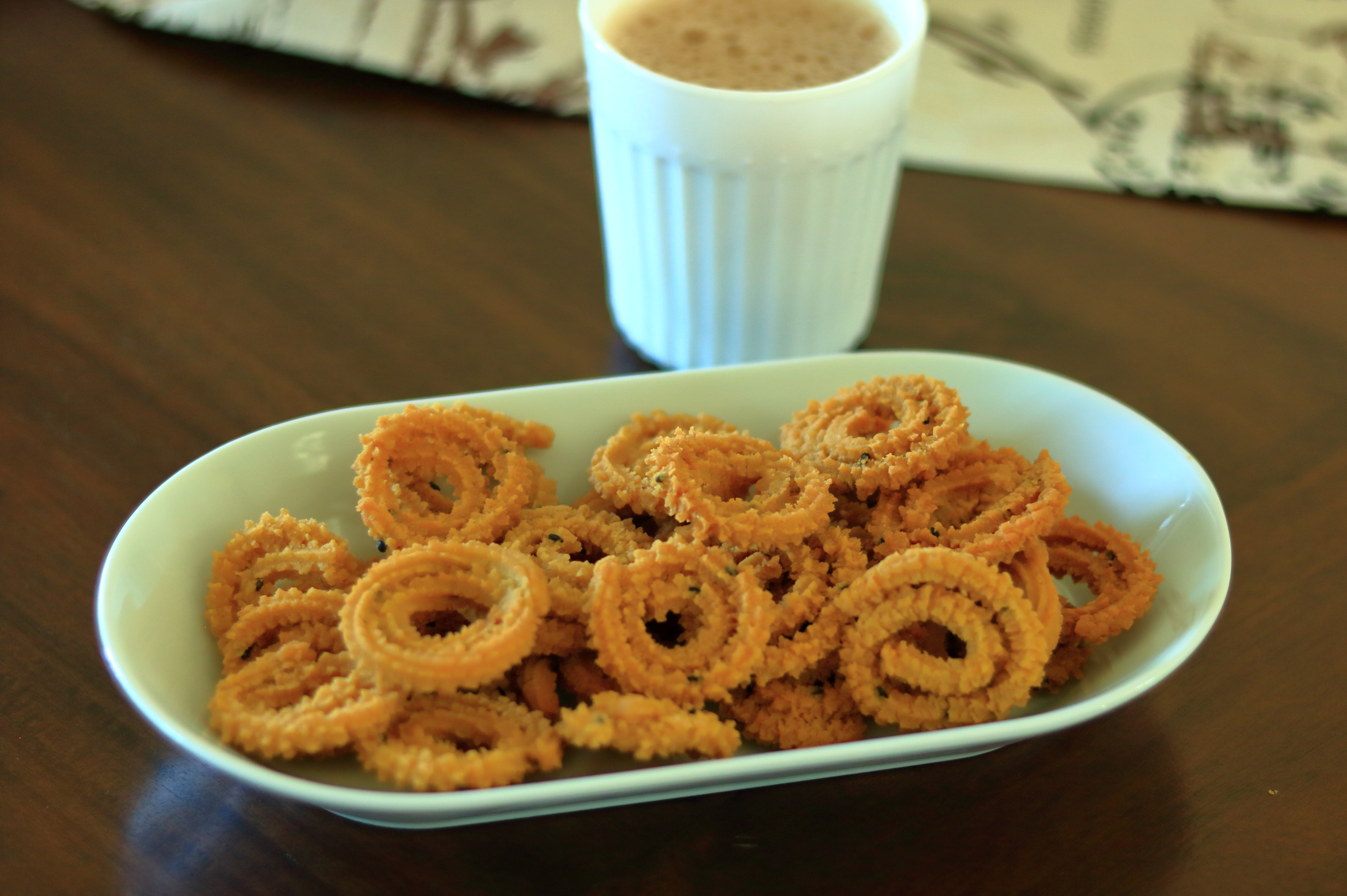Christmas Fruit Cake – a delicious and easy fruit cake that’s perfect for Christmas or really, all year round.
The story of plum cakes started in medieval England, where it was a popular tradition to observe a period of fasting and abstinence from any kind of feasting in the weeks leading to Christmas. The fasting and abstinence would hold you in good stead for the indulgent days ahead. As per the custom, on the eve of Christmas, a rich porridge was cooked and eaten to 'line the stomach' for the upcoming feast. The porridge was prepared with oats, dried fruits, spices, honey and sometimes even meat, eventually turning into a Christmas pudding. People started using the same ingredients and made fruitcakes with plums and other dried fruits on Christmas. That's how plum cakes are believed to have come into existence as a traditional dessert.
This fruit cake recipe doesn’t need you to soak the dry fruits in advance and it’s alcohol-free so you can make the cake instantly just before you need it.
INGREDIENTS:
All purpose flour - 1&1/2 cup
Chopped cashew nuts - 1/4 cup
Black raisins - 1/4 cup
Golden raisins - 1/4 cup
Mixed dry fruits (dates - 1/2 cup, glazed cherry - 1/4 cup, prunes - 1/4 cup, cranberries - 1/4 cup, crystalized ginger -2 tbsp)
Orange peel - 1tsp
Orange juice - 1 to 2 cup (approximate)
Powdered sugar (for cake batter) - 1/2 cup
Sugar (for caramelizing) - 3/4 cup
Butter - 3/4 cup
Egg -3
Spice powder( 1/2 inch cinnamon stick, 2 clove, 1 cardamom, 1/2 tsp nutmeg powder) - 1 tsp
Baking powder - 1 tsp
Baking soda - 1/2 tsp
Vanilla extract - 1 tsp
Pinch of salt
METHOD:
Dry fruits preparation:
Chop dry fruits into bite size pieces. Soak the dry fruits, black and golden raisins, orange peel in the orange juice for overnight or at least 3 to 4 hours. Ensure that the contents are completely immersed in the juice.
Heat a heavy bottomed vessel and add the sugar with a tbsp of water on medium high heat. You will find that the sugar will melt and start to change color. Don’t stir, you can swirl the vessel, once or twice. When you find that the color has changed to a dark golden brown, turn off heat. Immediately, pour half cup of boiling water very carefully into the caramel and stir and mix well. Just boil the syrup for 1 min. Cool the caramel before adding to the cake batter.
Note: Be careful, the liquid will splash when you pour the water into the hot caramel. The color of caramelized sugar is the key to the color of the cake.
10. Add the coated dry fruits and cashews to the batter and gently fold them into the batter. (Note : Don’t beat the flour just fold gently, by doing this you’ll get the soft moist cake.)
11. Add the beaten egg whites in two batches and gently fold the batter.
12. Grease the cake tins and line with parchment paper. Pour batter up to half of the prepared cake tins. Gently shake and tap the pan so as to even out the batter.
13. Bake for 45 to 50 minutes or until a tooth pick inserted into the center of the cake comes out clean. The baking time can vary depending on the oven and the size of the tin used.
14. Remove from the oven and cool in the pan for 10-15 minutes.
 |
Enjoy your cake and store it in an airtight container. |
The main prasadh made for ganesha festival/ Ganesh chaturthi is modak/modakam. These dumplings are prepared and relished with great enthusiasm all across the country and assume great significance during the birth anniversary of Lord Ganesha. Every state in India has its own version, many sweet and savory varieties can be prepared as kozhukatta /Modakam. Sweet kozhukkata/Modakam are steamed rice dumplings with coconut and jaggery stuffing.
INGREDIENTS:
METHOD:
1. Soak raw rice in water for 3 hours.
Preparing Poornam:
9. Heat a pan, add the grated coconut and jaggery.
10. Stir for about five minutes. Add cardamom powder and ghee. Mix well.
11. Cook for another five minutes and keep aside.
A sour and spiced rice recipe, mainly prepared in south India (Tamil Nadu) especially in hindu temples. It is offered as prasadam or nivedyam and then served to devotees. It is also prepared during special occasions and festival seasons and served during celebration feast.
INGREDIENTS:
METHOD:
3. Add mustard seeds, methi seeds, urad dal and red chili. Fry it few mins.
4. Then add Peanuts and channa dal. Roast it till aromatic.
5. Add curry leaves, cashews and fry it for few mins.
6. Add tamarind juice, salt, asafetida and jaggery. Mix it well.
7. Now add turmeric powder, coriander powder, methi powder and black pepper powder.
8. Saute well and cook it till oil oozes out.
9. Switch off the flame.
10. Now the tamarind paste is ready.
11. Spread the rice on a plate to cool. Once it cools, add the tamarind paste and mix the rice gently.
12.Lets do the tadka: Heat 2 tsp oil in a pan and add mustard seeds, channa dal and peanuts. When it roast, add red chili, curry leaves and asafetida. Mix well.
13. Add this tadka to the tamarind rice.
*Tadka peanuts and channa dal gives crunchy taste.
A creamy dish of vermicelli and curd/yogurt. This can be prepare at a short time. Instead of having the usual curd rice, try this curd semiya for a change. In this recipe, cooked vermicelli is mixed with seasoned, curd and optionally garnished with sweet pomegranate seeds or with crunchy cashew nuts. I love to add pomegranate seeds to this semiya as it gives a refreshing and a sweet crunchy texture to the smooth vermicelli.
INGREDIENTS:
Vermicelli – 1 cup
Curd – 1 & 1/2 cup
Mustard seeds – 1 tsp
Ginger – 1 inch piece finely chopped
Curry leaves
Water - 3/4 cup
Salt to taste
For the seasoning:
Oil – 1 tsp
Asafoetida – a pinch
Green chili – 1 finely chopped
Cashews - 5 to 6
For Garnishing:
Pomegranates
Cilantro
METHOD:
1. Bring 3 to 4 cup of water to a boil. Add the vermicelli to the boiling water.
2. Let this boil on medium heat till vermicelli is cooked.
3. Drain the excess water and keep it aside.
4. In a bowl, add curd and beat till it turns smooth.
5. Add the cooked vermicelli and salt.
6. Add water (around 3/4 cup) as per your consistency.
7. Mix well and keep it aside.
8. Heat oil in a pan for the seasoning.
9. Add mustard seeds, when it splutter, add asafetida, cashews, curry leaves and green chillies.
10. Saute for a few seconds and switch off the flame.
11. Add the seasoning to the prepared vermicelli curd mixture and mix well.
12. Garnish with pomegranate seeds.
13. Curd semiya is ready to be served with yummy pickles………
Vegetable saagu is a very simple Karnataka style dish prepared with mixed vegetables, coconut and few spices. It goes well with poori, chapathi, set dosa and Idiyappam. The rich creamy texture of the curry makes your breakfast complete.
INGREDIENTS:
Carrot - 2
Oil - 1 tbsp
Turmeric powder - 1/4 tsp
Curry leaves
For grinding:
Coconut - 3 tbsp
Fried Gram or Pottukadalai - 1 tbsp
Coriander leaves - fistful
Onion - 1 medium size
METHOD:
1. Wash and chop all the vegetables.
2. Grind all the ingredients given under “For grinding” , to a fine paste. Keep it aside.
3. Pressure cook the vegetables with turmeric powder, salt and little water for just 1 whistle.
4. Heat oil in a pan, add bay leaf and curry leaves.
5. Add the masala paste and saute on low heat for 5-6 minutes or until it leaves oil.
6. Add the cooked vegetables and 1/2 cup of water.
7. Simmer for 5-6 minutes. You can adjust the consistency according to your like.
8. Delicious Vegetable saagu is ready……
9. Enjoy it with poori, set dosa, neer dosa or chapathi.....
Fried gram laddu, maa ladoo, roasted gram ladoo are the other names to these delicious mouth melting ladoos. These are one of the quickest to make using very few ingredients for any occasions, festivals or when you have guests home.
INGREDIENTS:
Fried gram/ pottukadala - 1 cup
Sugar - 1/2 cup
Cardamom - 3
Ghee - 1/4 cup
Cashews - 8 to 10
METHOD:
1. Powder the sugar along with the cardamom pods.
3. Transfer them to a bowl.
4. Heat ghee in a pan and fry the cashew nuts.
5. When the cashew nuts turn golden brown, add the ghee and cashews to the powder.
6. Pull out enough of the ladoo mixture to make a lime-sized ball.
7. Shape into a smooth ball on your palm and set aside on a plate.
8. Add ghee in batches to the mixture and then repeat the steps to make maladus.
9. You can dip your fingers in some warm ghee as you shape, if the mixture gets too dry.
10. The delicious Maladu is ready for serving. Store it in an air tight container.



















